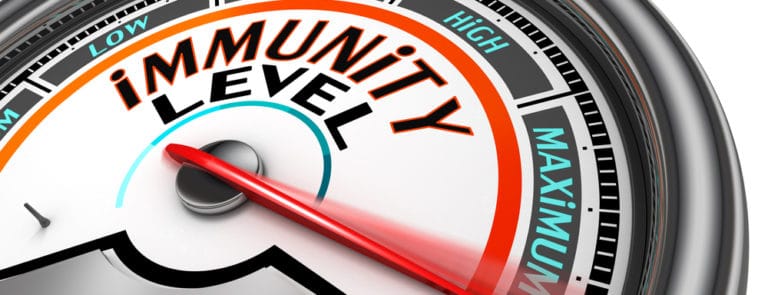15% off €35 OR 20% off €45
Code:CHOOSE
What is the immune system?

We tend to only think about our immune system in relation to colds and flu but it’s always working to fight off foreign invaders in our bodies. Here’s how.
It helps keeps away coughs, colds and all sorts of other bugs. Read more about how your amazing immune system actually works
Written by Charlotte Haigh on January 21, 2019 Reviewed by Professor Michael Rudenko on January 31, 2019
You probably only think about your immune system when colds and flu are doing the rounds. But it’s working all the time to guard you against foreign invaders, mounting constant attacks to defend your body without you even noticing.1What exactly is the immune system?
It’s a huge, complex network of cells, organs, proteins, and antibodies – known as immunoglobulins – designed to prevent your body from invasion by bacteria, viruses and parasites. In fact, it saves your life on a daily basis: it’s your immune system that launches an attack when it detects something that shouldn’t be there. Your immune system also shifts dead or faulty cells out of the body, and, if working correctly, it recognises normal, healthy tissue and leaves it alone.2Meet your immune system’s key players
White blood cells, also called leukocytes, roam your body, monitoring the presence of pathogens – organisms which can give us diseases. White blood cells are produced and stored in the following organs:3- lymph nodes, spread throughout the body
- thymus gland, in your neck
- spleen, found above the stomach
- bone marrow
- macrophages – they patrol for foreign bodies and remove waste cells
- neutrophils – these attack bacteria
- B-cells – these act as lookouts, keeping an eye out for pathogens and sending alerts
- T-cells – they receive signals from B-cells. Helper T-cells coordinate the immune response, while natural killer T-cells destroy infected cells4
So, what can go wrong?
Certain conditions can involve a problem with your immune system: Allergies – these can develop when your immune system reacts to something harmless – like dust or pollen – as though it’s a pathogen, causing symptoms such as wheezing, itching and a runny nose.5 Anaphylaxis – this is a severe, life-threatening response to a particular trigger, such as a bee sting or nuts. Symptoms include sudden swelling of your mouth and throat, shortness of breath, hives, nausea and vomiting. Anapyhylaxis is a medical emergency so seek help immediately if you experience these symptoms.6 Autoimmune disorders – conditions like rheumatoid arthritis, coeliac disease, multiple sclerosis and type 1 diabetes are autoimmune disorders – a result of your immune system confusing normal, healthy cells for pathogens, then attacking and destroying them.7 Immunodeficiency – this happens when any part of your body’s immune response isn’t working correctly, leaving you exposed to infection. This can happen due to ageing, poor nutrition, alcoholism, obesity or HIV.8Five ways to support your immune system
Although we often talk about ‘boosting immunity’, in reality it’s more about immune support and supporting your immune system to do its job well, keeping it healthy and balanced. Five of the most important ways you can look after your immune system are: 1. Get plenty of sleep: if you miss out on sleep, your immune system can’t release enough protective proteins, called cytokines. Your production of antibodies, which fight infection, also declines.9 2. Eat a balanced diet, with lots of fruit and veg: a 2018 study in Nutrients reported that deficiencies in certain key nutrients can dampen immunity, particularly: If you feel you’re missing any of these nutrients in your diet, it may be a good idea to take a multivitamin.10 3. Reduce stress: a 2014 study by Stanford University, USA found chronic stress can suppress your immune system’s protective effects. It can also trigger the type of immune over-reaction associated with the development of auto-immune diseases.11 Make time to unwind every day, for example with yoga, walking or meditation. 4. Don’t smoke: the tar and other chemicals in cigarettes can weaken your immune system. Smoking also forces white blood cells to stay elevated, stressing the body.12 5. Get some exercise: being active helps strengthen your immune system. Scientists aren’t sure why, but theories include:13- the rise in body temperature during a workout helps kill bacteria, leaving you better able to fight infection
- exercise may help flush bacteria out of the airways
- being active reduces stress hormones, which can suppress immunity



